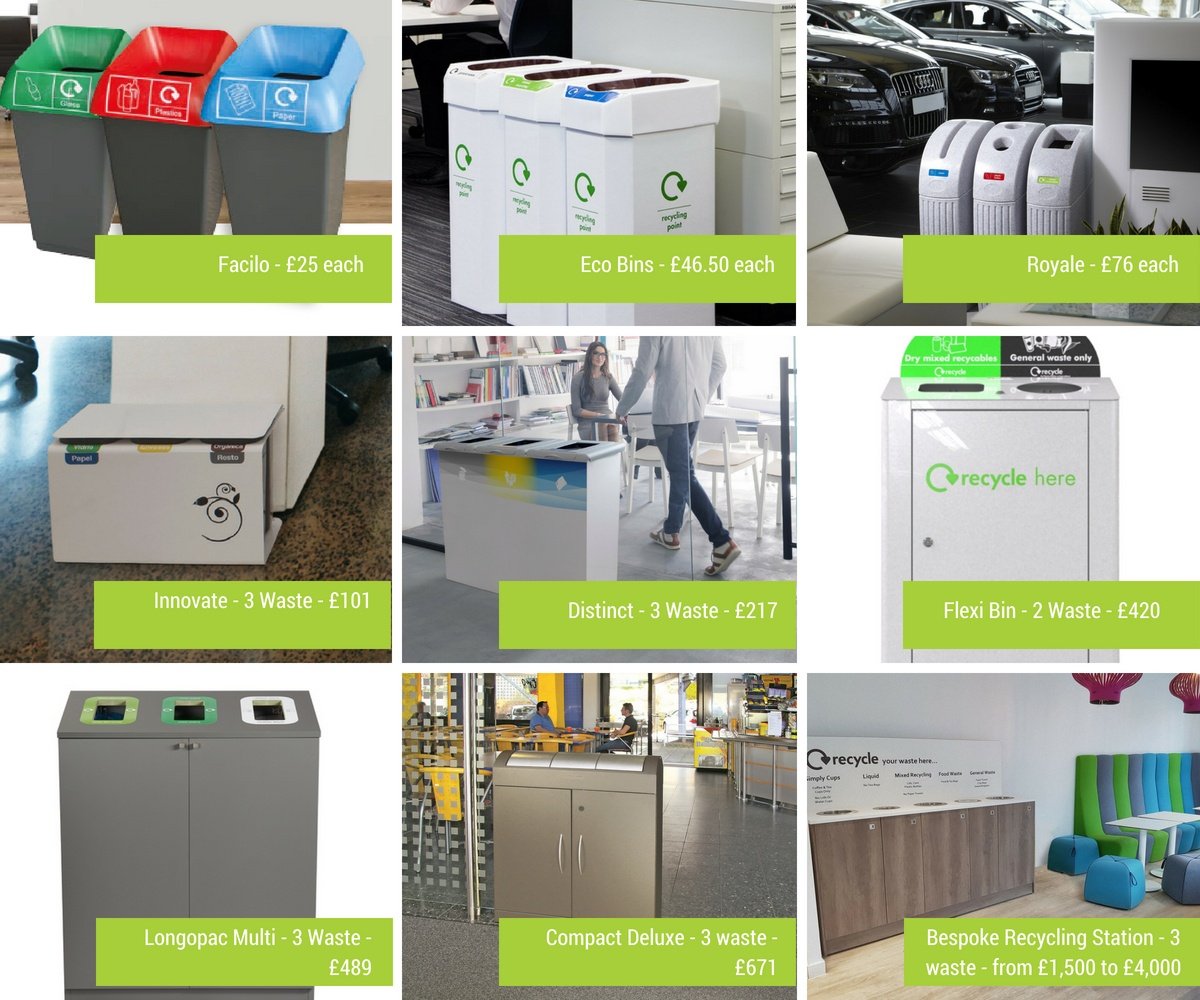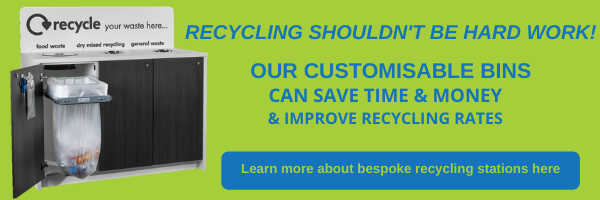UPDATED: 10th May 2018
It depends! Much like buying a car, let’s say a brand new Ford Fiesta, the price you pay for an indoor recycling bin depends on the specifications you add. Do you want a 3 door, 5 doors, alloy wheels, sat nav, reversing camera/sensor, bespoke paint, performance spec engine, sports exhaust? You get my drift.
So, the cost of a recycling bin system for your business depends on many factors. Some are listed below.
Waste Streams
How many do you need? What type of waste will it be? If you need to collect food waste, you’ll need a lid to keep in odours. Do you want to collect liquids? Liquids will need both a funnel and a collection vessel of some kind. If you’ll be collecting liquids, you might also need to collect the cups?
The average number of waste streams currently used is two: General Waste and DMR (Dry Mixed Recycling)
HINT: Before making any decisions on how many waste streams you need, please liaise with your current/proposed waste collection service provider. It would be such a waste if you went to all the effort to segregate your waste into multiple waste streams, to find that they can only collect general waste and DMR from the back of house.
Apertures
An aperture simply means an opening, hole, or gap. Your aperture of choice depends on the function and location of the bin.
Construction
Ranging from plastic, steel, wood/MDF/chipboard, or even recycled material, the choice of construction material also defines the price.
|
 |
- Wood/MDF/Chipboard – this construction material tends to be used for larger bins, sometimes referred to as recycling stations. As you would expect, this allows buyers to have a variety of wood finishes and wood types allowing the bins to fit within the existing interior design of the location in which it sits.
- Recycled material – I’m not aware of this being an off the shelf option and is probably the most expensive choice. Expensive due to the processes needed to construct the end product. You can make it out of anything you wish. I’ve seen a recycling station made from recycled yoghurt pots, I suspect the customer was a yoghurt manufacturer.
The internal waste collection system
Yes, this is also a consideration. You have your bin, but what is the mechanism to contain the waste within. A standard black bag, colour-coded liners such as blue for the food industry, an inner bag-ring so the bin liner stays within the bin and not folds over the sides. Or possibly as a solution called Longopac which boasts to reduce CO2, bag wastage and reduce waste collection. So much to choose from.
Quantity
Buying in bulk is always more cost-effective than buying one-offs. Quantity defines the cost you will pay for shipping, delivering (do you have a lift etc), installing and of course the materials needed to construct – especially if bespoke.
Capacity
This is where some buyers may go wrong. They want the best price and opt for the cheapest or what they feel is the best value for money. Then, they realise the bins aren’t big enough.
Capacity is easily measured by calculating the number of employees that will use the bin and/or the volume of waste you currently produce. It depends on where the bin will be – front of house or at the end of a production line.
Signage
This option is for a business that wants their bins to not look like bins. Going bespoke a.k.a tailormade allows you, well, the sky’s the limit.
You can design the backboard of the bin, include your brand logo, sustainability/recycling mission/values. You can add graphics/words to signpost the apertures for even greater waste segregation. Remember, correctly segregated waste holds a greater value (££) when it’s collected.
So, back to the original question – What would it cost to buy an indoor recycling bin station for work?
You could put a couple of Facilo (plastic) bins together and create a 3 waste recycling bin station from £75. You can customise an Aspire or Multibin recycling station which would cost between £500 and £1000 depending on number of waste streams and specifications. Alternatively, you could opt for a totally bespoke built 3 waste recycling station (depending on exact specifications) which could cost anything from £1,500 to £4,000.
Or you could opt for anything in-between these price brackets – please see some example bins with prices below.
Keen to learn more?





